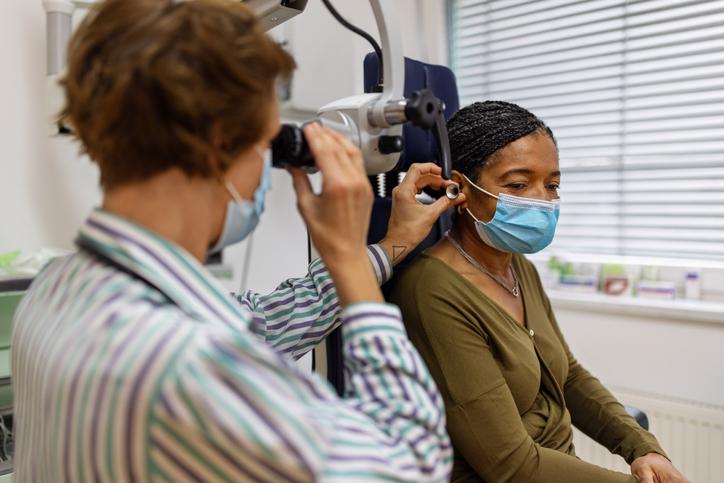
Inequities surface in COVID care of disabled, BIPOC patients
“We wanted to hear from the doctors or nurses themselves of what was going on,” said UW Medicine researcher Danbi Lee.
A qualitative report published recently in the PLOS of Global Health found that frontline healthcare providers witnessed BIPOC and patients with disabilities receiving substandard care on a regular basis at various hospitals.
The findings of this survey included interviews with 19 healthcare staff over four states. It was conducted with providers working at hospitals during the Omicron outbreak of 2021.
“During the pandemic, there was a lot of news of BIPOC patients and those with disabilities receiving substandard care,” said lead author Danbi Lee, a researcher in the Department of Rehabilitation Medicine at the University of Washington School of Medicine.
“So we wanted to learn what was really happening,” she said. “We reached out to hospitals in the hardest-hit areas, and asked staff — physicians, nurses and PAs — what they saw.”
A team at the UW Center for Health Workforce Studies, under the Department of Family Medicine, contacted frontline providers, including doctors, nurses and other healthcare staff, in hospitals located in Florida, New York, Illinois and Washington state.
“We wanted to hear from the doctors or nurses themselves of what was going on,” Lee said. “If patients were not being provided all the options of care, they wouldn’t really know that from their end."
Lee observed, “There were many problems which need to be fixed. Many providers had flexibility in how they chose patients, and there was no protocol in how to consistently treat patients.”
One hospital had a VIP floor where doctors could place patients, who generally received better care there, the report stated.
“People of color were less likely to have access to that floor,” Lee noted.
Others in the interviews reported:
- Delayed care for BIPOC patients or patients with disabilities. Some providers refused to see patients with Down syndrome or other disabilities.
- Language barriers due to lack of interpretation or caregiver support were common, and telehealth care resulted in an additional barrier to doctor-patient interaction.
- Many concerns of BIPOC patients were ignored or dismissed. Clinician-led conversations were the norm.
The study was conducted from April to November of 2021. Now, two years later, Lee suspects the inequities still exist, although the COVID-19 surge has abated, at least for most of the population. But there are many communities still dealing with COVID-19 and the fallout of the pandemic, she stressed.
“There are people still dying, with chronic conditions,” she said. “The consistent message is that the pandemic is over. But it’s not over for those who have underlying conditions. There is still discrimination against people with disabilities, those who are obese, BIPOC or poor.
“We need more provider training and support,” she said, “and a better system for consistent care, that doesn’t shift based on socioeconomic background, race or disability. and when the healthcare system gets overwhelmed.”
A total of 19 pandemic frontline healthcare providers participated in the study, including nine physicians, five nurses, three rehabilitation professionals, and two nurse practitioners. Researchers recruited interviewees via email and word of mouth. For the most part, they contacted healthcare providers in the states’ larger hospitals.
Lee said that weaknesses in the study included the small sample size and the fact interviews took place in only four states. Most of the interviewees were female (12) and white (11), as well.
Future studies should include interviews of workers in long-term care facilities as well as a focus on other marginalized groups in the healthcare system, the report noted.
Written by Barbara Clements - 253.740.5043, bac60@uw.edu
For details about UW Medicine, please visit https://uwmedicine.org/about.